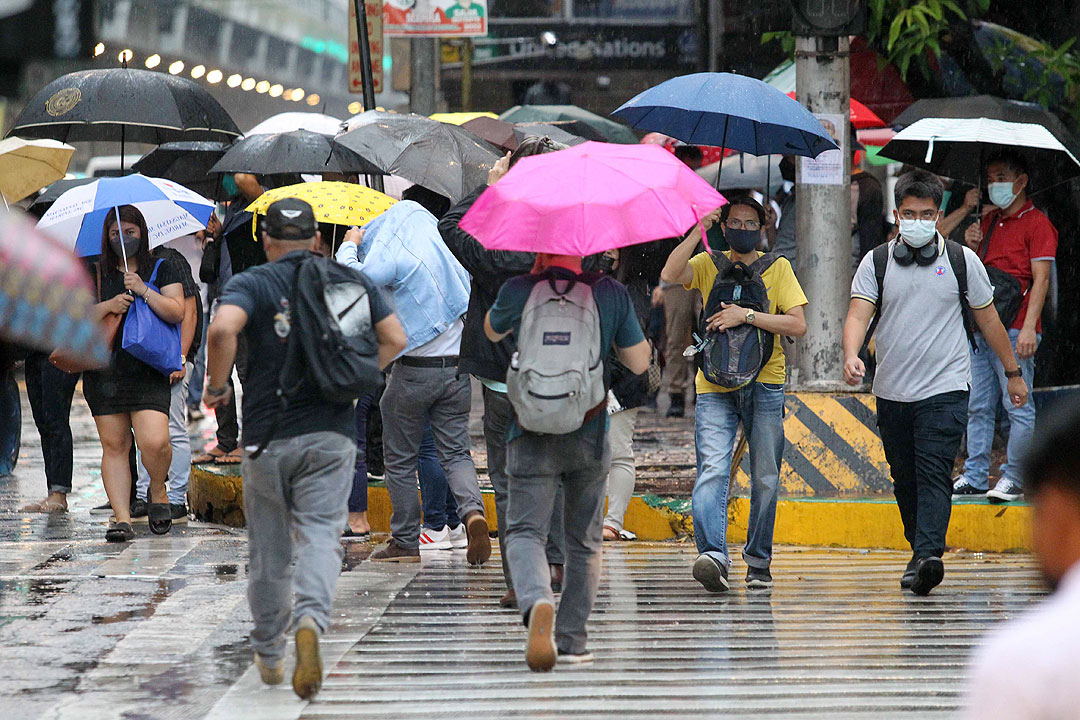World Bank trims Philippine growth outlook for 2022 on Ukraine war

By Tobias Jared Tomas
THE WORLD BANK trimmed its growth forecast for the Philippines to 5.7% in 2022 due to the impact of the war in Ukraine, warning that growth could further slow to 4.9% if conditions worsen.
At a briefing on Tuesday, World Bank East Asia and Pacific Chief Economist Aaditya Mattoo said the Philippine growth projection for 2022 was downgraded from 5.8% forecast given in October, which he said was already conservative.
The Philippine economy expanded by 5.6% in 2021.
For 2023 and 2024, the World Bank expects the country’s gross domestic product (GDP) to grow by 5.6% on average.
However, these new projections are below the Philippine government’s 7-9% target for 2022, and 6-7% for 2023.
“Growth will draw strength from the domestic environment with declining COVID-19 (coronavirus disease 2019) cases, looser restrictions, and wider reopening. The strong domestic condition will help compensate for the weak external environment, reeling from a global growth deceleration, rising inflation, and geopolitical turmoil,” the World Bank said in a report released on Tuesday.
Consumption growth would be higher if not for the Russia-Ukraine conflict, which pushed up prices of fuel and food.
Mr. Mattoo said the Philippines is vulnerable to the impact of the Russia-Ukraine war since it is a net importer of fuel. Oil prices have surged since Russia’s invasion of Ukraine, which began on Feb. 24.
The World Bank said Philippine poverty incidence is estimated at 18.3% in 2021, and this is expected to decline to 16.2% this year as the economy recovers. However, the drop in poverty may be affected by the spike in inflation.
“In the Philippines, we have done a simulation that showed if food prices increased by say, 10%, it would lead to an increase in the poverty head count by 1% or another million. The fuel price increase will have an impact of one-third as large if it’s about 10%. There’s a big adverse effect on poverty reduction goals, and will hurt growth,” Mr. Mattoo said.
The World Bank said the Philippines faces significant external risks from the global policy tightening and rising commodity and energy prices, while domestic risks emanate from the upcoming May elections.
“The political transition risks policy discontinuity that may undermine market confidence,” it said.
Threats from new COVID-19 variants also loom, but the World Bank noted the Philippines has adopted systems to allow increased mobility and localized responses to fresh outbreaks that reduce the impact on the economy.
‘TRIAD OF SHOCKS’
Meanwhile, the Washington-based lender said developing East Asia and Pacific (EAP) region’s GDP is now expected to grow by 5% this year, lower than the 5.4% forecast given in October.
Mr. Mattoo said the region is facing a “triad of shocks which threaten to undermine its growth momentum,” citing the Russia-Ukraine war as the biggest risk.
“Shocks emanating from the war in Ukraine are disrupting the supply of commodities, increasing financial stress, and dampening global growth, which will mean lower economic growth and higher poverty in developing EAP,” the World Bank said.
Growth in the region, which includes China, may slow to 4% “if global conditions worsen and national policy responses are weaker,” it added.
Other risks include the ongoing coronavirus pandemic, the financial tightening in the United States, and China’s economic slowdown.
The US Federal Reserve raised its policy rate for the first time since 2018 last month to combat decades-high inflation. It also signaled more aggressive hikes in the coming meetings.
China is battling the biggest surge in COVID-19 cases since the start of the pandemic, as it continues to stick to a “zero-COVID” strategy.
The World Bank sees China, which accounts for 86% of regional output, growing by 5% this year in a baseline scenario and 4% in a lower-case scenario.
The EAP region, excluding China, is forecasted to grow by 4.8%, while growth in ASEAN+5 countries is projected to expand by 4.9%.
“The succession of shocks means that the growing economic pain of the people will have to face the shrinking financial capacity of their governments. A combination of fiscal, financial and trade reforms could mitigate risks, revive growth and reduce poverty,” Mr. Mattoo said.
The World Bank recommended four types of policy action to help economies mitigate the risks and revive growth. This includes providing efficient and targeted support to households and firms, instead of price regulations; and “stress-testing financial institutions could help identify risks that fester behind the veil of regulatory forbearance.”
It also proposed reforms of trade-related policies in goods, and improving skills to strengthen the capacity to adopt new digital technologies.




